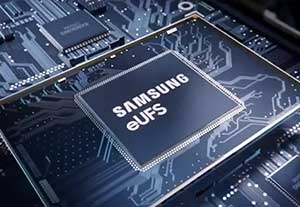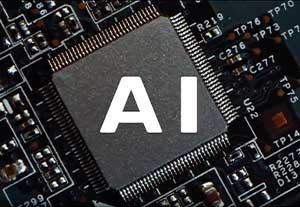Reinforcement Learning
What Is Reinforcement Learning?
Reinforcement learning (RL) is a powerful machine learning (ML) methodology that various industries have increasingly adopted in recent years. It is a feedback-based approach where an AI-driven system, known as an agent, learns how to behave in an environment through repeated iterations. RL comes in handy when real-time decision-making is required, and reduced turnaround time, less power consumption, and high performance are essential. RL is a subset of AI technology that has found increasing popularity in various industries, and electronic design automation (EDA) is no different.
RL in EDA helps design complex electronic circuits and systems that often involve multiple iterations and need optimization; an agent can be trained to make decisions based on the best results obtained as per the requirements using RL algorithms. The agent can then apply this knowledge to optimize the design process and improve the overall performance of the circuit or system. In this way, RL helps explore many more design tradeoffs, reduces the required iterations, and improves the overall cost and productivity.
One of the significant applications of RL in EDA is optimizing power consumption. Minimizing power consumption is a critical factor in the design of electronic systems. RL can train an agent to optimize the power consumption of a circuit by adjusting the design's parameters. Another application is in the placement and routing (P&R) of components on a printed circuit board (PCB). The P&R task involves finding the best locations for each component and routing the connections between them, which can be a complex task. Using RL, an agent can be trained to optimize the placement and routing process.
How Does Reinforcement Learning Work?
RL is a popular form of ML that follows a stochastic process similar to human learning. The process involves obtaining information, processing it, trying it out, and receiving feedback for improvement. RL is being used to optimize, control, and monitor their workflows with unparalleled accuracy and productivity. In fact, it's even being used in chip design to achieve the best PPA configurations through multiple floor designs.
The general workflow for training an agent through reinforcement learning includes the following steps:
- Formulate the problem.
- Create the environment.
- Define the reward.
- Create the agent: A policy and learning algorithm.
- Train and validate the agent: It’s important to set up training options and train the agent to tune the policy. After the training ends, evaluate the performance of the trained agent by simulating the agent and environment together.
- Deploy the policy: Once the agent is trained, the optimal policy can be deployed.
Reinforcement Learning in EDA
RL is a cutting-edge technology implemented in chip design. It comprises multiple chip floor designs that work together to attain the most optimal performance, power, and area (PPA) configurations. The generated floor plans are the result of electronic designer’s input parameters, which are used to reduce wire length, manage congestion and density, minimize power consumption, and optimize the area. Through continuous reinforcement, the RL system continuously improves, delivering even better designs automatically.
Benefits of Reinforcement Learning in Chip Design
RL has successfully trained autonomous agents for various applications that involve attributes such as input/output system, large data, reward system, AI environment, and training and inference mode. EDA problems also have these attributes, which one reason why RL is being adopted across the design process. It offers many benefits, such as:
- Time and power reductions
- Speeds up the development and run the chip faster
- Improves productivity
- Speeding high-quality, lower-cost chips to market
Reinforcement Learning and Cadence
The semiconductor industry is being driven by the technology drivers such as hyperscale computing, autonomous driving, communications, and industrial IoT. The explosion of data and AI computational needs are the primary drivers of this convergence in computational software. Cadence is leading this computational software convergence in intelligent system design, which comprises a merger of EDA, system design, and AI. Cadence tools are grounded in computational engineering that helps customers co-optimize systems, hardware, and software across multiple system domains. Cadence offers tools that use RL across the chip design process, including:
Cadence Allegro X AI is a revolutionary system design technology that extends the Allegro X platform with the power of artificial intelligence to enable layout automation for small to medium-sized PCBs. Allegro X AI leverages the power of cloud computing to automate four PCB tasks - placement of components, creation of power plants, routing of critical signals, and fast analysis to ensure that the produced layout is correct by construction. This level of automation enables a transformative experience. Layout tasks that took days can now be performed in hours, reducing the time to generate layout by more than 10X.
Cadence Virtuoso Studio leverages 30 years of industry knowledge and leadership in custom/analog design to provide broader support for systems, including RF, mixed-signal, photonics, and advanced heterogeneous designs. Innovative AI techniques, cloud enablement, infrastructure improvements, and integration across Cadence products complement these design flows, creating a hub for efficiently delivering designs for the real world. It supports the entire flow from chip design to advanced packaging creation to board layout. The comprehensive planar and FinFET-based automation provides better throughput and productivity—massively scalable, cloud-ready solutions for when 100s of simulations turn into 1,000s. The embedded AI-enabled tools learn and improve next-generation designs. Further, it allows the heterogeneous integration of 2.5D or 3D designs for RF and photonics systems.
The Cadence Verisium AI-Driven Platform represents a generational shift from single-run, single-engine algorithms to algorithms that leverage big data and AI across multiple runs of multiple engines throughout an entire SoC verification campaign. The Verisium platform optimizes verification workloads, boosts coverage, and accelerates root-cause analysis of bugs. The Verisium platform reduces debug turnaround time, increases debug productivity, improves regression turnaround time, and automates test-case failure triage.
Cadence Cerebrus Intelligent Chip Explorer is a revolutionary, machine learning-driven, automated approach to chip design flow optimization. Block engineers specify the design goals, and Cadence Cerebrus will intelligently optimize the Cadence digital full flow to automatically meet these power, performance, and area (PPA) goals. By adopting Cadence Cerebrus, engineers can concurrently optimize the flow for multiple blocks. This is especially important for the large, complex system-on-chip (SoC) designs needed for today’s ever more powerful electronic systems. Additionally, the engineering team's productivity improves significantly with the Cadence Cerebrus full-flow reinforcement learning technology.
Cadence Optimality Intelligent System Explorer is a multiphysics optimization software that enables the analysis and optimization realization of electronic systems. With the increasing complexity of electronic system design and greater performance requirements, Optimality Explorer surpasses the limitations of the conventional human-intensive optimization process by replacing a traditional interactive flow of design, test, and refine loop with artificial intelligence (AI)-driven technology, which expedites the optimal system design solution without compromising accuracy.
Other Cadence products that incorporate AI technology to improve their turnaround time or quality of results:


